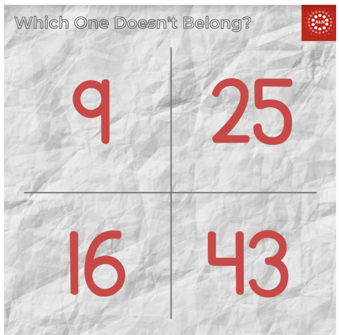
Differentiation - What Is It?
What is differentiation and where can it be applied?
A differentiated classroom is facilitated by an educator's timely and ongoing response to student needs. Educators target and implement strategies and tools that provide access and inclusion and promote student engagement, independence and growth with content, process and products. The learning environment and a balanced math block provide the structures and opportunities for all students to receive the support and just right instruction they need to achieve high levels of success. Differentiated instruction can be applied to 4 key areas of a learning community:
- Content
- Process
- Product
- Environment
Content
Differentiation gives all students access to the same high quality content through engaging, meaningful and supportive structures within the math block. Differentiation is about knowing students personally and deeply and responding to their needs. Educators do this by creating differentiated and inclusive tasks that uphold rigor while allowing for choice and voice throughout the process and with the products students create within an inclusive learning environment.
Process
To differentiate process teachers must be proactive and reactive based on qualitative assessment data that occurs throughout the math block. With effective differentiation, teachers must respond to student processes and products during learning and provide them with opportunities to practice these skills and concepts independently and collaboratively. Students should be engaged within flexible groups where they are utilizing a variety of models and strategies to make sense of the content.
Product
In a differentiated classroom, students are being offered choices for how they present their learning. They are creating products to demonstrate what they know, understand and can do with the content. For example, a student might verbally justify how they solved a problem, create a concrete model, draw a model, use equations, write a paragraph or create a video. Each of these choices upholds the same rigor while at the same time remove barriers specific to their expression of learning.
Environment
Differentiation requires responsive and actionable changes to be made to the learning environment to ensure the learning process is inclusionary and accessible for all students. The learning environment must be established with students and procedurally practiced to establish a culture of independence and collaborative practices. Consider access to concrete math manipulatives; these tools should be part of the learning environment for all students as models for expressing math thinking, not an add-on for ‘kids who need them’. The differentiated environment should always be flexibly responding to the needs, interests and readiness of the students interacting with it.
How does it fit in a math classroom?
The ways educators structure their balanced math block heavily influences access, equity and inclusivity in students’ math experiences. The All Learners Lesson Structure considers and responds to each of these key areas in the following ways:
- Launch/Number Sense Routines
- Main Lesson (mini-lesson)
- Math Menu (just right math time)
- Closure
Launch/Number Sense Routines, Main Lesson and Closure are aspects of a balanced math block that includes differentiated experiences that are based on students' needs and readiness. These routines have various access points to content and provide student choice with the expression of their products and processes. One key foundation of this differentiated structure promotes student agency within an equity culture. This Launch image below exemplifies differentiation through its low floor and high ceiling design. Within this number sense routine, all students have access points, are given opportunities to collaborate, engage in shared sense-making and learn from each other. There are many free math resources on the All Learners Network website.

The All Learners Lesson Structure also provides a time for all students to receive just right differentiated practice where the emphasis is on building individual capacity in an environment based on choice, called Math Menu. Math Menu affords each student access to just right content with choice about process and product through independent structured practice and small flexible groups. Educators adapt Math Menu to meet the dynamic needs of all learners by monitoring and adjusting the tools, resources and experiences included in each student experience.





